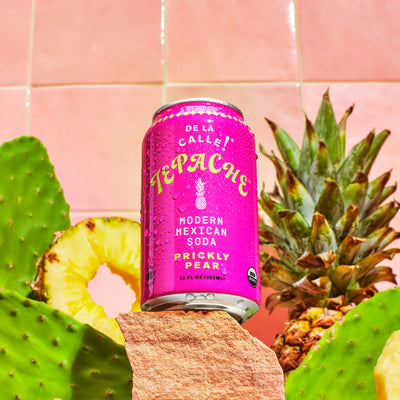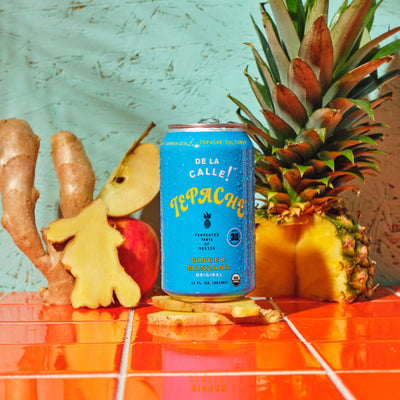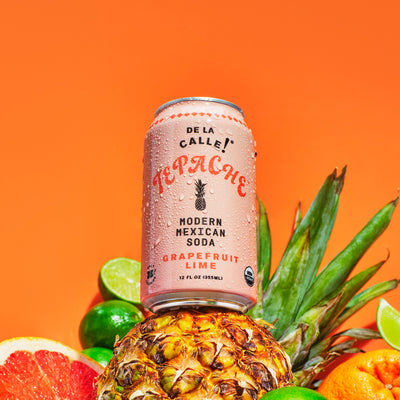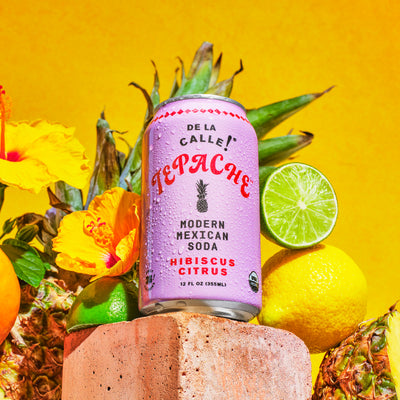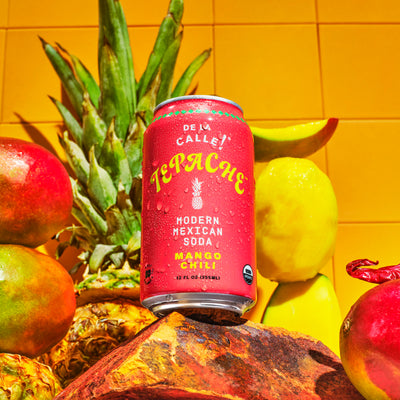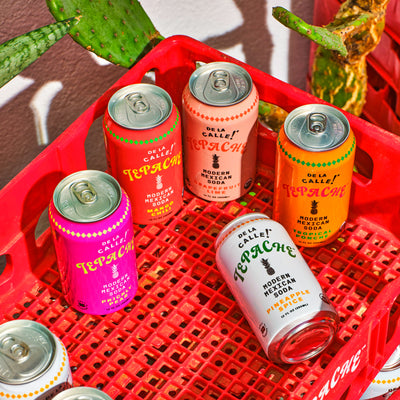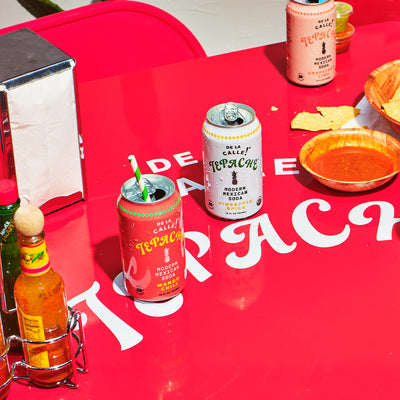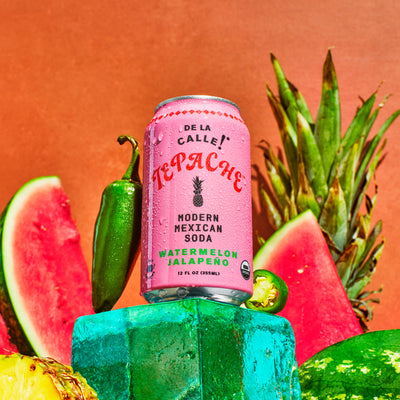Chamoy: Everything You Need To Know

The tastes of Mexico are all about maximalism. Chefs and home cooks alike are always looking for new ways to pack as much flavor into a dish as possible.
Mexican food does not shy away from layering sweet, salty, sour, and savory over each other. This audacity and gusto are part of what makes Mexican food so beloved by so many different people.
Whether in the many different snacks popular in the country or their traditional drinks, Mexican flavors are strong and unafraid.
A key component in these unabashed flavors is chamoy. Chamoy is the name given to the variety of foods that come as dried fruit, candy, and sauces. It is a salted and pickled fruit, usually made from plums.
Chamoy is infused with extra spice and zest once it gets a boost of chile. This versatile food is a staple in the world of Mexican cooking.
However, chamoy did not always have such a high reputation. The sauce itself is akin to the way peanut butter is viewed in the United States. Chamoy could be considered junk food in many ways. It is most commonly remembered as a favorite from people’s childhood.
The spicy, fruity, sweet sensation captures the essence of maximalist Mexican flavors. So long as it does not ruin the dish, the more, the merrier!
However, there is more to know about chamoy than its boldness. Chamoy has a rich history behind it.
Chamoy is experiencing a renewed popularity in a lot of Mexican cooking. It can be layered over a dessert or used as a traditional sauce for a meal. This was not always the case. Chamoy was more commonly found topping street food and snacks. But this only scratches the surface of all there is to know about chamoy.
Read on to learn everything you need to know about the real champion: chamoy.
The Origins of Chamoy
Chamoy was introduced to Mexico between the 16th and 19th centuries. It was brought to the country by Asian immigrants.
Initially, the food was slow to take root in Mexican culture. Many vendors sold it as dried or wet fruit in the 1960s. The dried or pickled fruit slowly became adapted with Mexican flavors. Chamoy really started to earn its wings once Mexican cooks began adding chiles to spice up the taste.
By the 1970s, chamoy was picked up by candy companies. The snack was marketed as candy and sauce.
By the time the 1990s rolled in, chamoy was well ingrained into Mexican culture. For many who enjoyed the sweet as a child, chamoy became synonymous with their youth.
A food that began as an import from far away found its way into the hearts of the Mexican people. A marriage of two cultures to create a communally enjoyed treat.
Chamoy Today
Chamoy has come a long way since being traded in markets in the long past. It is now a globally sold, processed food. The flavor of chamoy has become so distinct that it can be replicated without any of the original ingredients. And yet, still, it resembles that signature chamoy taste.
In candies, chamoy is used in a variety of ways. It can be eaten as pieces of candy, rolled into lollipops, or used to coat any sweet or tart treat.
Chamoy is commonly seen as street food and, until very recently, was not considered a high-end flavor. Now, chamoy is making its way boldly into cocktails and restaurant dishes.
The sauce can be served over the protein of a meal or even be mixed into a cocktail.
Chamoy has a delicious, versatile flavor. As a sauce, it can be spread over fruits like mangos. It can also coat an apple to make a chamoy-candied manzana.
It can be added to every meal, snack, dessert, or beverage—a jack of all chamoy.
Restaurants are using both bottled and homemade chamoy to ground their dishes. This deviation between recipe and restaurant allows for a slightly different experience with each taste of chamoy.
It speaks to the uniqueness and vibrance of Mexican life that each taste of chamoy differs from the last. Each recipe for chamoy is infused with the traditions and tastes of the generations that came before. Even still, people find ways to reinvent it!
What a beautiful way to celebrate history and build and improve upon its foundations, while respecting generations past. Chamoy encapsulates a few integral aspects of Mexican culture.
How To Enjoy Chamoy
There are a plethora of ways to enjoy chamoy. Some of these methods may surprise you. This demonstrates just how versatile chamoy is.
- Straight from the jar on a spoon
- Drizzled over shaved ice
- Mixed into your cocktail
- Baked on top of salmon
- Roasted on vegetables
- Glazed over seared duck
- Vacuumed sealed, and compressed with a peach beside smoky mezcal ice cream (seriously, this one was thought up by acclaimed Mexican chef Enrique Olvera)
The versatility of chamoy is clear. More and more chefs are experimenting with chamoy. This is only the beginning of chamoy’s integration into the American palette. It may soon be as familiar to us as salsa.
The more chamoy becomes common in large grocery stores, the more people across the country will be able to enjoy the flavors in their own cooking. This opens up so many possibilities for experimentation with new and exciting ways to utilize chamoy.
Steadily and surely, more and more people are learning to love chamoy. It’s only a matter of time before we see it at local grocers between the tepache and tortillas.
What Now for Chamoy?
What will this year bring? What will they garnish with a freeze-dried zest of chamoy next?
Yes, the future of chamoy is uncertain, but that uncertainty could lead to something even more impressive than the journey chamoy has already made.
It’s a flavor that goes beyond categorization yet fits so perfectly into each one. It’s children’s snack that gracefully grew into a frozen margarita mixer.
Chamoy was once a street food. Now, it’s featured in five-star dinners. Innovation and creative power have always been with the people—the heart of any culture is its people.
Chamoy is just one of the exciting flavors newly introduced into more and more American food.
What are you waiting for? Go grab some chamoy; there are mangos that need a dipping sauce!
Sources:
What Is Chamoy and How Is It Used? | The Spruce Eats
Why Chefs Are Turning the Spotlight on Chamoy | Eater
Chamoy Is Mexico's Flavor Fiesta Condiment, Courtesy Of China : The Salt | NPR
